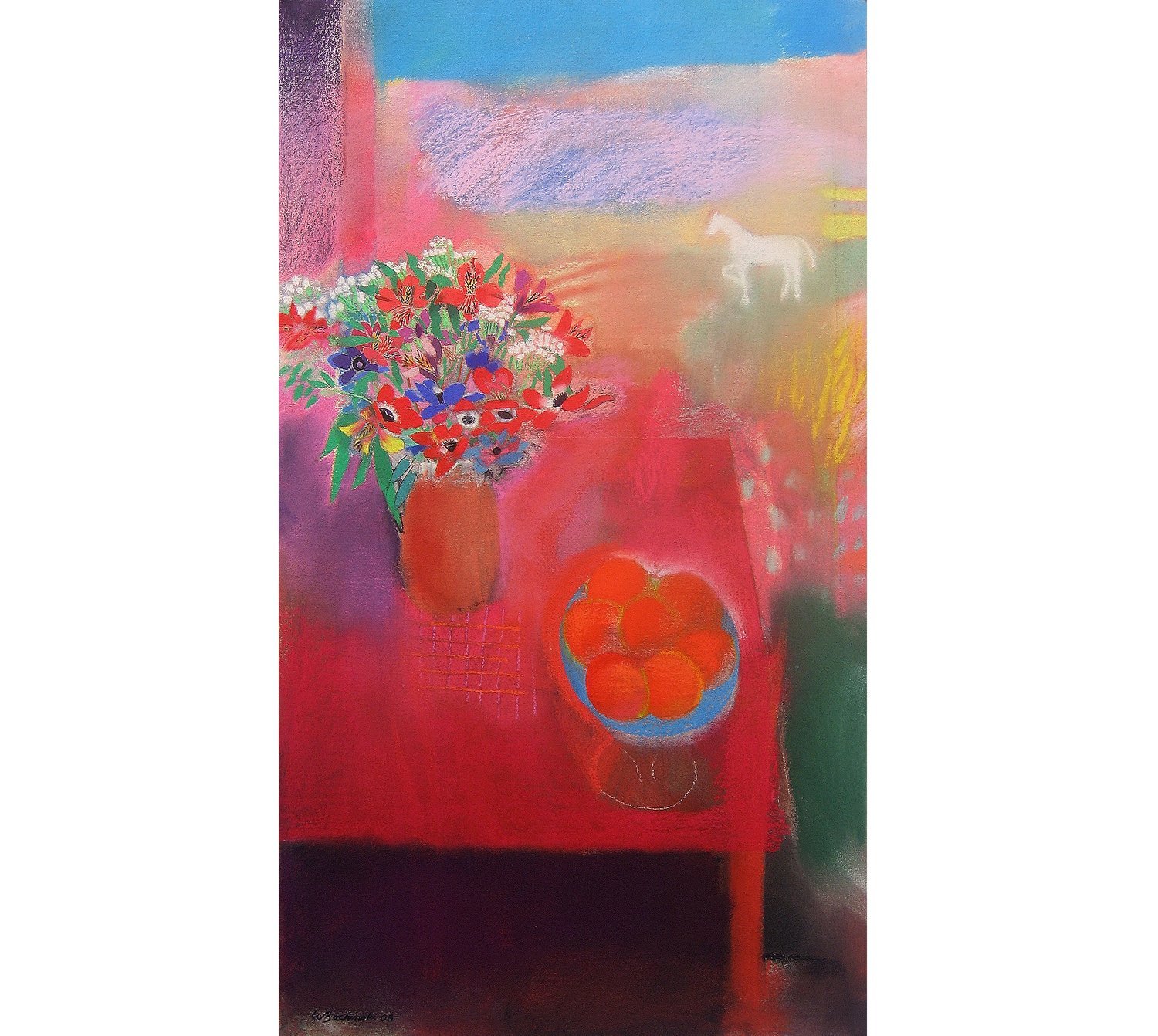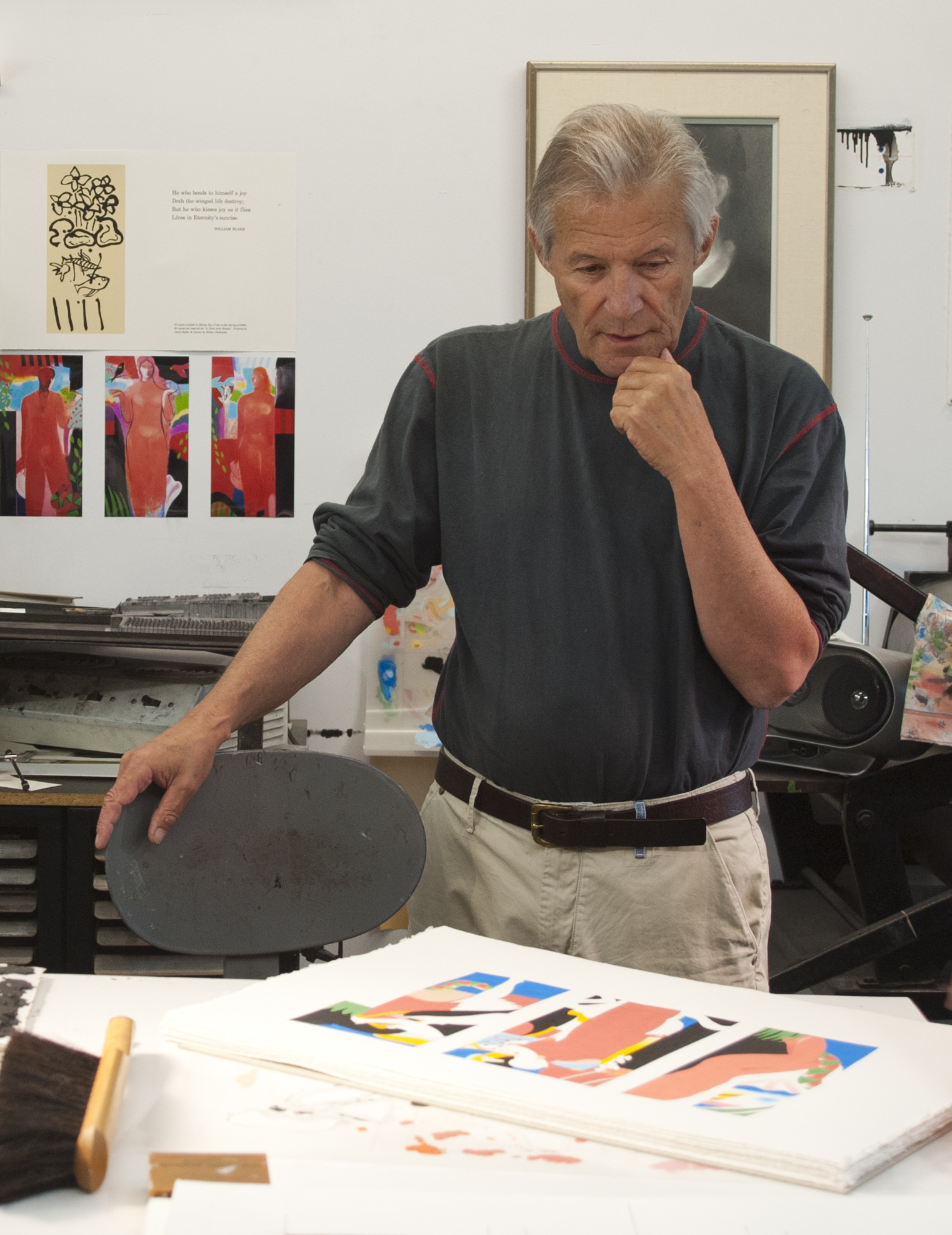Walter Bachinski
In Bouquet of Flowers Bachinski brings together two common themes of his work, the circus family and flower still life. There is a powerful dissonance between the two elements of the pictures, an irony in the display of nature and the life-draining display of the clown. These two pictures reflect the openness with which Bachinski can approach the subjects. In the first he deliberately attaches himself to a particular tradition of the circus that had attracted, among others, Picasso but that he can re-approach the subject and transform it into a study on the vulnerability of adolescence.
Although he works from time to time in oil on canvas, Bachinski has long concentrated on pastel. Pastel comprises pure ground pigments combined with a neutral binder. In the first, Bachinski wanted to maintain sharp divisions among the forms, strong, clear linear effects and relatively little blending of colours. In the second he uses the softest effects of pastel, blending colours and getting the most intense colour values and presenting a hazy atmosphere. This contrast of approaches reflects a range similar to Matisse who through much of his career moved freely between paintings of intense colour, filling every space with an extravagance of shapes and contrasting, even conflicting colours and drawings of the finest simplicity. Throughout his career, Bachinski has moved effortlessly from pastel and oil paintings, to drawings to sculpture. The contrast between pastel and sculpture, in particular, appears extreme (Edgar Degas’ work presents, perhaps, the best known precedent). For Bachinski (and he is, of course by no means alone) the radical creativity of Matisse and Picasso opened possibilities (the ‘possible worlds of poetry’) in the making of art that are, at least as far as we know, inexhaustible.









